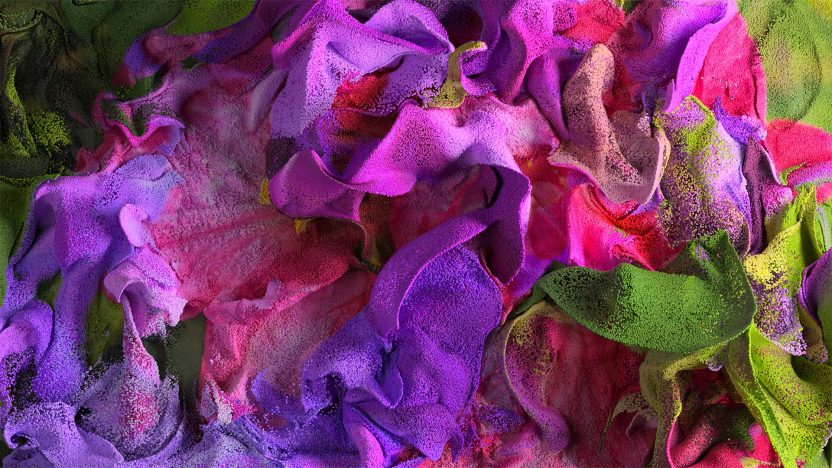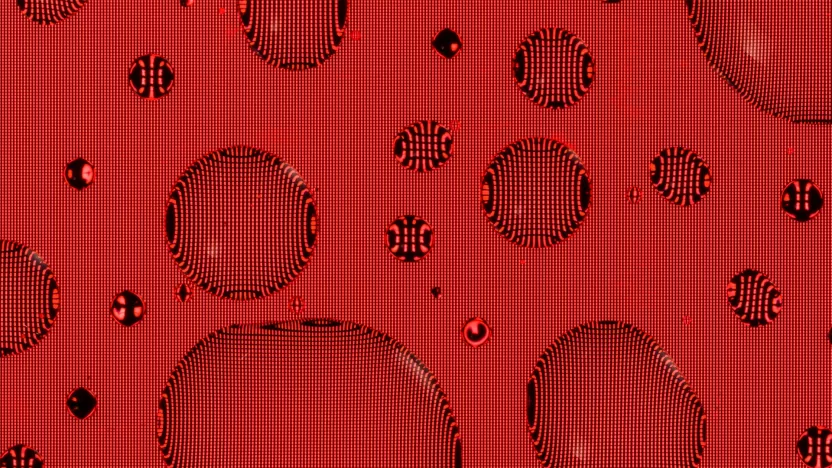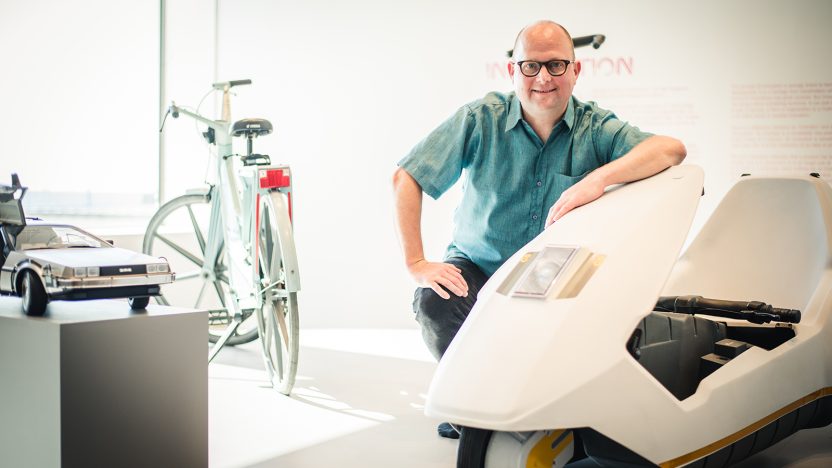Can cyber art show the unseen inside us?
The artworks by Heather Dewey-Hagborg often lack legal precedent, because the use of personal data in the age of surveillance does too
by Eleonora Raspi
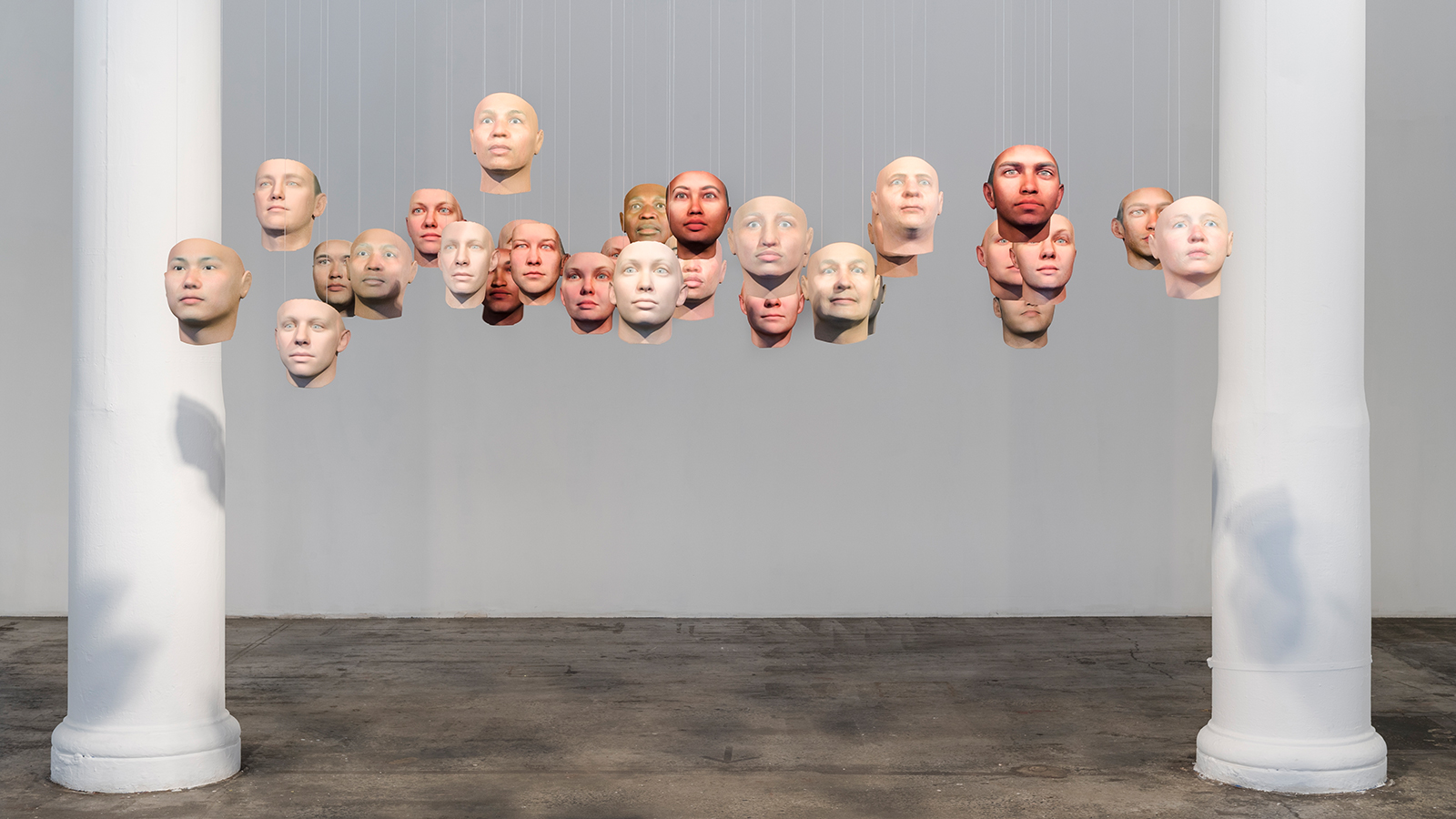
There’s a little bit of ourselves in everything we do. Literally. Mind you, there are no spiritual or extracorporeal intentions in this statement. We are talking about the traces, the unseen-but-very-organic pieces that we constantly leave behind every time we touch or interact with somebody and something.
Saliva, hair, cigarettes, chewing gum: all of this data at a certain point becomes somewhat public, available, legible. And, in a way, it speaks about a newfound vulnerability for our species.
Heather Dewey-Hagborg has been tackling such issues in her research and artwork. Based in New York, Heather (Philadelphia, 1982) is a transdisciplinary artist, biohacker, and visiting assistant professor at NYU Abu Dhabi. Fostering innovative research in the fields of visual art, AI, biotechnology, and biopolitics, her work encompasses intertwining ideas of intimacy, privacy, and identity.
Her work is held in many public collections, such as Centre Pompidou, the Victoria and Albert Museum, the New-York Historical Society, and has been widely covered in the media, from the New York Times and Forbes to Art Forum and Wired.
How did it all begin? When does scientific research end, and when does your artistic interpretation take over?
In my research, science and art have been completely entwined, almost indistinguishable, for a very long time. I went to a very interdisciplinary college and became inspired by conceptual art and classics, like Duchamp and John Cage.
I started working closely with video and sound editing, but I felt that the software created distance between me and the medium — so I learned how to program and how to code.
As I was experimenting in my art practice at the intersection of philosophy, technology, and sound, I came across AI. I became fascinated by the philosophical aspects inherent to this field. As a graduate student, I was developing a political consciousness about technology.
This was also when I began researching contemporary issues like electronic surveillance, cameras on the street, and wiretapping — a crucial issue in the Bush era.

Eventually, I started to make connections between those things and the very personal liability of the human body, shedding traces of itself all the time. This reflection pushed me towards experimenting with DNA and biotechnology.
Luckily, a community lab called Genspace had just opened down the street from me in Brooklyn. With the help of the laboratory scientists, I learned how to extract, amplify, and analyze DNA and then worked to develop my first bio-art project, Stranger Visions.
Stranger Visions (2012-13) is pivotal in your career. The world violates personal identities while putting together the images (and thus the identities?) of strangers who may have never met in real life. Was there any kind of reaction during and after the show?
The reactions were many. During the show at the Clocktower Art Center in New York, The Wall Street Journal interviewed me, took photos, and then put it right on the front of the metro section. At that point, I wasn’t taking any measures to protect my identity, so my website showed my address, email, and phone number.
Indeed I got a lot of emails, from people angry about the potential outcomes of privacy violation, to enthusiasts. The most common email (I still get it sometimes) is from people offering to send me their DNA samples to experiment with. And that’s funny because the whole piece is about how much we’re shedding our traces all the time.
What is your artist’s role in society?
Since I began, I wanted to bring together my activism and artistic practice, combining it with my understanding of science and technology. As a starting point, I always look at little-known things that are already happening, and then I try to bring some kind of emotional impact from that to people. I want to make those things that might seem obscure and distant, like how new technologies will impact society, the object of my art investigation.
At the time of Stranger Visions, for instance, I felt I had achieved what I wanted — that is, embedding our legibility and vulnerability into public consciousness and showing how pieces of ourselves are falling off and are open for interpretation. In other words, showing this risk of mass surveillance. This is about the future, of course, but it’s always based on the present.
In using sensitive and private information as a primary matter for your projects, have you ever had ethical dilemmas?
The greater good is the main thing for me. Putting forward the ethos of “white hat hacking”, through my work, I try to show risks, to demonstrate to people that such risks are real. But it’s a very delicate balance: I don’t want to make my subjects feel abused and violate what I would consider being a reasonable amount of trust.

It’s evident with Stranger Visions: the work is meant to be very provocative and to make people angry. Eventually, I hope that anger can entice people to action and consciousness about these dangerous things as they filter more and more into our lives.
At the time, I felt that I would only look at the “externally visible characteristics” of people and not at things like disease risks. However, in a later piece, I did look at a much more comprehensive view of a stranger’s genome. My perspective on these topics is constantly changing.
In Radical Love: Chelsea Manning (2015) and Probably Chelsea (2017), you used DNA phenotyping (generating images of people from nothing more than the DNA profile) as a tool of liberation, to give a face — or potential faces — to someone whose face was denied at that moment. What role does identity have in your work?
I was excited to work with Chelsea. We started exchanging letters while she was still in prison. Eventually, we began working on Probably Chelsea to celebrate her release from prison and expanded our investigation from just looking at the reductionism of gender to considering many more dimensions to show the multitude of possible choices that could be interpreted from the same DNA data.
While tackling identity issues, our work evolved together over the years from a traditional classical portraiture of Chelsea in the first project Radical Love, into a collaboration between the two of us, with Probably Chelsea. The whole project is very meta: it is me reflecting on my earlier work, but also it mirrors the growing trend of using DNA phenotyping. While the entire idea beneath Stranger Visions was purely speculative back then, a few years later this became a concrete reality.
In 2014, a company started a forensic service for the US market, which employed a related technology to “reconstruct” mugshots from DNA samples provided by the US police. Generic images of people, showing no concerns to the inherent reductionism applied in the process itself. They take this one generic image and put it out with a few parameters, mainly looking at race closely.
They are pretending that there isn’t subjectivity in the process of generating this face from DNA and that there is only one singular face that comes out of the process, rather than different facial interpretations and variants.
For me, working with Chelsea was this first step into showing that identity, even genetic identity, is more complex than just a one-to-one thing. Since Chelsea is transgender, in Radical Love we decided to focus on genetic sex as a jumping-off point: we had conversations about how we should present Chelsea’s gender in the portraits and ultimately decided to present two different kinds of stereotyped images from the model, one that would be gender-neutral and the other that would be a stereotypical “female face.”
By putting the two faces side by side, we wanted to draw attention to the reductionism in machine learning models purporting to be like an “average” female face. More recently, with Probably Chelsea, I tried to shed light on some of the other possible interpretations of her DNA sample and give them as much weight as we might give to a single image. DNA phenotyping is not an exact science; rather, it implies making choices and facing many complexities in a multidimensional space.

From Chelsea Manning to Lovesick: the Transfection (2019) and Lovesick Futures (2020). This recent piece presents, in a way, oxytocin as a cure for our current status of uncertainty, fear, and immobility due to Covid-19. It reveals a need for intimacy, also expressed in T3511 (2018). Could you expand the concept of intimacy and love?
Indeed, DNA is the most intimate thing you could know about a person. When I designed Stranger Visions, I was focusing solely on privacy issues. Then, working with Chelsea Manning, I suddenly realized that through her data I was getting to know someone I had never met in person, imagining her face and thinking about her. Such perspective influenced projects that came later, such as T3511 (2018) and Lovesick.
With Chelsea, I started addressing the idea of intimacy more. Eventually, I realized that I had developed an intimate relationship with her by studying her DNA. It was kind of a non-reciprocal relation: I was looking so much at her, but she wasn’t looking at me. For me, metaphorically speaking, it was similar to a real relationship in which I might pay much more attention to the other person than they might pay to me.
Similarly, I made metaphorical parallels between scientists’ laboratory work and human relationships: every day, scientists have sample cells to grow, feed and keep warm. It is an act of care. Cells are, of course, part of the body, and they come from another human who may or may not be aware that their cells are growing there and being cared for this way.
This thought was the impetus to go deeper into biotechnology’s intimate dynamics and the overlaying with my personal feelings, my relationships, struggles, and choices I made in love and friendship. This is how I began conceiving Lovesick.
I started working at Integral Molecular [a biotechnology company specialized in antibody discovery] as an artist in residence shortly after the Trump election and Brexit. It was a very discouraging time, filled with hate and polarization. I also felt that digital technology was creating new boundaries, as I was interacting with people more and more in this digitally mediated way rather than in person like I would have previously in my life. I missed the closeness of having real personal interactions.
And this was the year before the pandemic came. Covid-19 eventually pulled us even further apart. In this sense, Lovesick’s primary goal is to give the viewer a frame for imagining a positive future, one that is closer and messier, more intimate, and less distanced.
Due to Covid-19, many economic sectors have undergone a drastic paradigm shift, highlighting critical points while opening up many previously hidden opportunities. Do you think there is a paradigm shift also in the art world? What are the biggest challenges, as well as the biggest opportunities?
Today, digital exhibitions are an excellent opportunity to look at digital works that reflect on digital identities. Online exhibitions, in general, can foster reflection on how digital technology has affected us, how we see ourselves differently through these tools, what they enable and what they foreclose. This was an interesting discovery that came out of the pandemic situation.
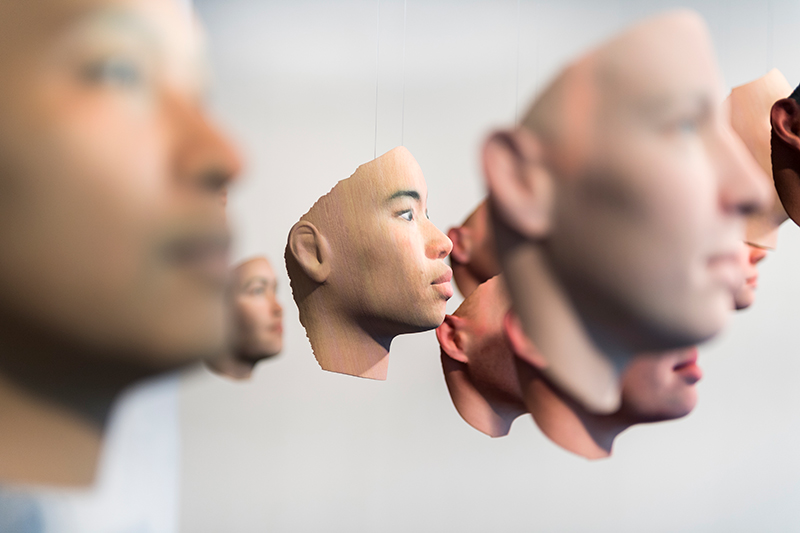
The NYUAD Art Gallery digital exhibition Not in, of, along, or relating to a line, which I curated with Maya Alison in January 2021, is an example of this. Our starting point was designing an exhibition to be viewed on the phone since we both felt that was how we were looking at things those days.
We particularly wanted people to have a closer, more intimate connection with the digital works and experience the whole exhibition with a certain amount of casualness. We were experimenting with the idea of letting people get lost within the exhibition and tracing different paths that they might take, traveling through the works.
In truth, the upside of online video is that you get to have a different connection to the work than in the physical gallery space, where you come to a room, and suddenly there’s a video playing. At that point, you have to make the decision, to sit down and watch, to go quickly, or stand for 30 seconds and then exit.
As you have power over the phone, you can always start the video from the beginning and never come into it in the middle. You can back things up; you can click and fast-forward things. This possibility may lead to a stronger understanding of the work and the ability to watch the work properly and establish a more personal relationship with the digital work.
What projects are you currently working on?
My next work is on transplantation. In particular, I am focusing on the practice of growing human-body compatible organs in pigs. I’m researching how they’ve evolved along with human culture, from the wild boar to domesticated farm pigs, and then beyond, to laboratory strains and speculative future pigs.
Using two media, 3D portrait and lenticular print, I will represent the evolution of specific subjects. The final component will be a video, a sort of experimental documentary showing my visits to the lab facilities where this kind of work is going on. I have already done one initial visit to a facility in Munich, and I’m hoping to do some more shootings in the US this spring, maybe get back to Munich again in the summer if Covid-19 allows it. This piece will premiere at the MIT Museum in 2022.
